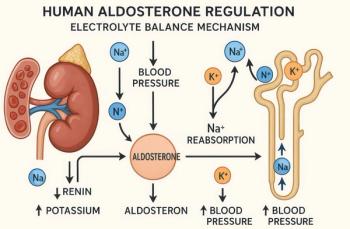
ECGs Make for Fascinating Reading: A Photo Essay
The history of T-wave inversions, normal variant (or benign) causes, ST segment elevation myocardial infarction, hyperkalemia, Wellens’ syndrome, proximal left anterior descending artery occlusion-an evaluation of ECGs and what stories they can tell you.
Case 1:
The natural history of the inverted T wave is variable, ranging from a normal life without pathologic issues to sudden death related to cardiac or respiratory syndromes.
A variety of clinical syndromes can cause T-wave inversions, from life-threatening events, such as acute coronary ischemia, pulmonary embolism, and CNS injury, to entirely benign conditions, such as normal variant T-wave inversions and the persistent juvenile T-wave inversion.
The normal T wave has been described to have a gradual upstroke with a more rapid downstroke in the terminal portion. This relative asymmetry may vary because many women and older patients without identifiable cardiac disease may have symmetric T waves.
Interpretation of the ECG in the context of the individual patient presentation allows the clinician to discern among normal, potentially abnormal, and abnormal.
The causes of T-wave inversions have been grouped into 2 categories: primary T-wave changes (alterations in the duration or morphology of the action potential, without concurrent changes in the orderly sequence of activation) and secondary T-wave changes (changes result from aberrant ventricular activation in the context of normal action potential characteristics).
All cases and images provided by William Brady, MD
NEXT CASE »
Case 2:
Several clinical entities present with inverted T waves. Because T-wave abnormalities in isolation have not been studied to any extent, there are few epidemiologic data that describe their prevalence in the ECGs of both normal populations and those at risk for cardiac events.
An isolated T-wave inversion in a single lead is not abnormal and, in fact, is considered a normal variant finding. Other benign causes of T-wave inversion include the digitalis effect, shown here, and the persistent juvenile T-wave pattern.
Digitalis compounds have been implicated as a cause of T-wave inversions in otherwise healthy persons. The digitalis effect refers to ECG findings that are observed with therapeutic levels of the drug-it is not a toxic manifestation. These include T-wave inversions, flattened T waves, an increased U wave, a prolonged PR interval, ST-segment depression with a distinct “scooped” appearance, and a shortened QTc interval (secondary to abbreviated ventricular action potential).
Persistent juvenile T-wave inversions may appear in the precordial leads (eg, V1, V2, and V3) with an accompanying early repolarization pattern. These findings may continue into adulthood, and some patients demonstrate persistent T-wave inversions in the precordial leads.
NEXT CASE »
Case 3:
A 57-year-old woman with a history of hypertension, diabetes mellitus, and angina presented to the ED with chest pain. She noted the onset of chest pain about 2 hours earlier; the pain was associated with dyspnea, emesis, and diaphoresis.
Results of a 12-lead ECG are shown here. The ECG demonstrated subtle inferior ST segment elevation myocardial infarction (STEMI). The presence of reciprocal change in the lateral leads strongly supports the presence of STEMI.
Reciprocal change is defined as ST-segment depression in leads separate and distinct from leads that reflect ST-segment elevation. The concept of reciprocal change cannot be used if ST-segment elevation is not present or in patients with abnormal intraventricular conduction, including left bundle-branch block, ventricular paced rhythm and, to a lesser extent, left ventricular hypertrophy via voltage criteria.
The morphology of the depressed ST segment is horizontal or downsloping; it need be present only in a single lead but often is present in numerous leads. Reciprocal change is seen in about 75% of patients with inferior wall acute myocardial infarctions; in 30% of patients with anterior wall myocardial infarctions, and frequently in lateral STEMI.
NEXT CASE »
Case 4:
A 32-year-old woman with multiple medical problems was brought to the ED with lethargy and weakness. The family also noted progressive confusion and fatigue over 2 days. The medical history included juvenile-onset diabetes mellitus, hypertension, renal insufficiency, and diabetic retinopathy with visual impairment.
Results of a 12-lead ECG are shown. The diagnosis was hyperkalemia.
Hyperkalemia presents across a spectrum of severity, ranging from asymptomatic discovery to cardiorespiratory arrest. Of the various electrolyte disorders, it is perhaps the most serious with the potential for severe adverse outcomes-including death-if not managed appropriately.
Common causes of hyperkalemia include acute and chronic kidney injury, red blood cell hemolysis, diabetic ketoacidosis and other acidotic states, and medication-related issues.
Modest increases in the serum potassium enhance or accentuate myocardial repolarization, which is manifested electrocardiographically by alterations in the T wave. The peaked, or prominent, T waves in the precordial leads are the most common ECG findings of significant hyperkalemia.
The sinoventricular rhythm of severe hyperkalemia is a life-threatening rhythm, characterized by a very wide QRS complex that occurs at a very slow ventricular rate.
NEXT CASE »
Case 5:
A 42-year-old man came to the ED with chest pain at rest. The pain had occurred in the past but upon exertion. On arrival, he appeared well and in no distress. The 12-lead ECG is shown here.
This often is the initial diagnostic tool clinicians use when evaluating patients with suspected acute coronary syndrome (ACS). The information can provide the diagnosis, indicate certain therapies, and assist with disposition and risk prognostication considerations. Certain ACS ECG patterns are suggestive of significant arterial occlusion and related high-risk presentations.
One such ECG pattern, Wellens’ syndrome, is a high-risk ACS presentation noted in patients with active or recent chest discomfort, with precordial T-wave abnormalities, and without ECG or biochemical evidence of acute myocardial infarction.
The high-risk nature is based on a very frequent association with proximal left anterior descending artery occlusion. This coronary lesion can progress over a very short period to anterior wall ST-segment elevation myocardial infarction.
The T-wave abnormalities include 2 basic configurations. The more common ECG presentation is the deeply inverted, symmetric T wave seen in 75% of such patients. In the remaining patients, a biphasic T wave is seen.
NEXT CASE »
Case 6:
A 47-year-old man with no previous medical history called 911 complaining of chest pain; EMS treated the patient with aspirin and sublingual nitrates and obtained this ECG. He was transported to the ED. The pain was associated with nausea, dyspnea, and diaphoresis.
Certain acute coronary syndrome (ACS) ECG patterns, which do not include widespread ST-segment elevation, are indicative of significant arterial occlusion in the ACS patient; they are associated with significant risk to the patient and mandate a rapid response.
One such high-risk ECG pattern, recently described, includes the association of the prominent T wave and J point depression producing ST-segment depression seen in the precordial leads, coupled with ST-segment elevation in lead aVr.
This ECG pattern is defined as follows: (1) ST-segment depression with upsloping ST segments continuing into tall, prominent, symmetrical T waves in the precordial leads; (2) ST-segment elevation in lead aVr; and (3) the absence of ST-segment elevation in the affected leads.
This ECG constellation of findings is associated with significant proximal left anterior descending artery occlusion and ultimately anterior wall STEMI.
Newsletter
Enhance your clinical practice with the Patient Care newsletter, offering the latest evidence-based guidelines, diagnostic insights, and treatment strategies for primary care physicians.




















































































































































































































































































